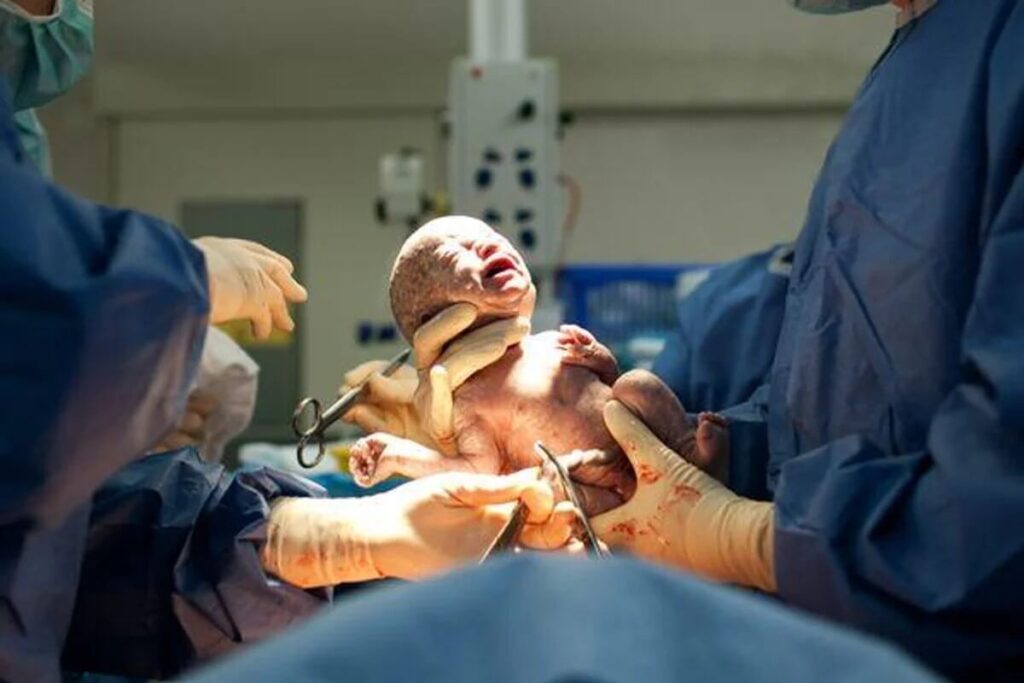To understand when a Caesarean delivery is necessary, it’s important to understand that there’s a difference between necessary and desirable. Strictly speaking, a Caesarean delivery is only truly necessary when this type of delivery is essential to save the life or health of the mother or the baby, or both. However, there are many circumstances when a Caesarean delivery may be desirable and may help prevent problems that could make a Caesarean delivery a necessity.
immediate and emergency Caesarean delivery
During labor and delivery, there are some complications that can arise that would require an immediate and emergency Caesarean delivery. For example, if the placenta detaches from the uterine wall – called a placental abruption – the baby can suffocate and the mother can hemorrhage. In this case, a Caesarean delivery can save the life of both by getting the baby out as quickly as possible.

In addition, if fetal monitoring indicates that the baby is struggling – known as fetal distress – then a Caesarean delivery may be necessary to save the baby’s life. This is a gray area, however, because it isn’t always clear when a baby’s responses to labor are normal or indicate actual distress. All babies respond to the stresses of labor differently – some handle the stresses of labor better than others. Most Caesareans performed for fetal distress result in babies who are perfectly healthy and normal upon delivery.
When necessary Caesarean delivery
Another condition which necessitates Caesarean delivery occurs when the baby simply can’t safely fit through the mother’s birth canal. When the mother has diabetes in pregnancy, her baby may become macrosomic. This is a condition in which the baby’s abdomen may grow larger than the baby’s head, which is usually the largest part of the baby. The baby’s head could deliver normally, but then the baby’s abdomen could have difficulty passing through the birth canal. For this reason, women who are diabetic frequently deliver their babies via Caesarean.
Caesarian section to protect the health of the baby
Similarly, women who have experienced physical trauma to the pelvis may be required to deliver via Caesarian section to protect the health of the baby. Past car accidents or sports injuries can affect the way the pelvis grows and develops, possibly leading to a permanent narrowing of the birth canal. If you have any concerns of this nature, your health care provider will help evaluate your situation and come up with a birth and delivery plan that will keep you and your baby safe and healthy.

There are other situations in which the baby’s presentation makes Cesarean delivery necessary. If the baby’s head isn’t properly positioned – specifically, the baby’s chin is pointing upward rather than being tucked in toward the chest – the baby is said to be a “star gazer” and will be delivered by Caesarean section. A baby that’s lying transverse – or horizontally – in the uterus will also necessitate a Caesarean delivery.
Conclusion
Most breech babies are delivered via Caesarean section, although whether this necessary or a pattern of practice remains debatable. Many practitioners worry that the baby’s head could “get stuck” in the birth canal and fewer practitioners today have experience with vaginal breech deliveries. However, in some cases, it may still be possible to have a vaginal birth if you’re willing to put in the time and effort to seek out the extra resources you’ll need.
Other resources:
Glaucoma Surgery Types, Success Rates, and What to Expect During Recovery
Everything You Need to Know About Laser Eye Surgery Benefits, Risks, and Recovery

